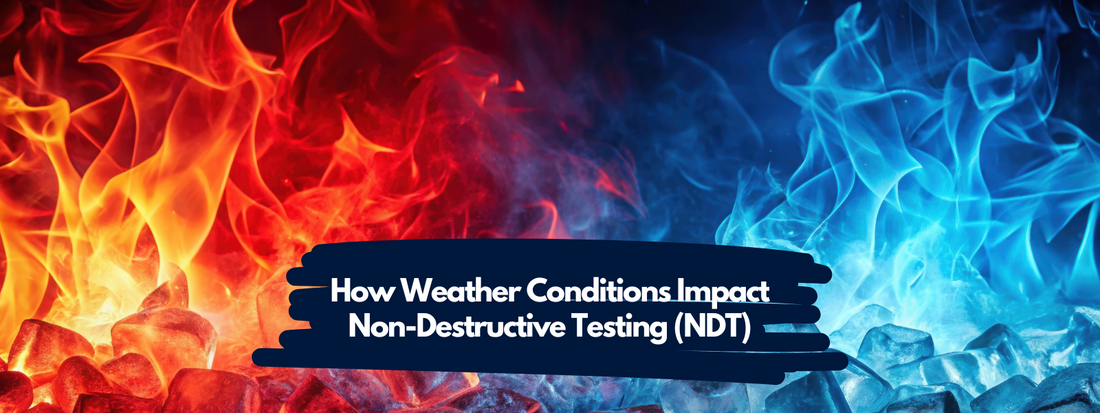
How Weather Conditions Impact Non-Destructive Testing (NDT)
How Weather Conditions Impact Non-Destructive Testing (NDT) & What You Need to Know
Understanding the Crucial Role of NDT
Non-Destructive Testing (NDT) plays a vital role in industries such as construction, aerospace, energy, and manufacturing. It ensures the structural integrity and reliability of materials and components without causing damage. Techniques like ultrasonic testing (UT), radiographic testing (RT), and magnetic particle testing (MT) help detect internal flaws, prevent failures, and maintain safety standards.
While NDT provides invaluable insights, environmental conditions-particularly weather-can significantly influence test results. Extreme temperatures, humidity, and even wind speed can impact testing accuracy and efficiency. Understanding these challenges is essential for companies that rely on NDT for quality assurance and compliance.

How Weather Affects NDT
1. Temperature Fluctuations and Their Impact on Testing
Both high and low temperatures can alter material properties, which may affect the accuracy of NDT methods.
-
Cold Weather Effects:
-
Materials, especially metals, contract in low temperatures, which can cause microcracks to become more pronounced.
-
Ultrasonic testing (UT) may produce unreliable readings because sound waves travel differently in cold materials.
-
Radiographic testing (RT) film may take longer to develop, potentially affecting image clarity.
-
-
Hot Weather Effects:
-
High temperatures can cause materials to expand, leading to variations in test results.
-
Heat can impact magnetic particle testing (MT) by altering the magnetic field's effectiveness.
-
Elevated temperatures may also make certain testing materials, like liquid penetrants, evaporate too quickly.
-

2. Humidity & Moisture: A Hidden Challenge
Humidity can significantly impact NDT results, particularly for techniques that involve electromagnetic waves or chemical reactions.
-
Dye Penetrant Testing (PT): Moisture on the surface can prevent penetrants from properly entering cracks, leading to false-negative results.
-
Eddy Current Testing (ECT): Changes in conductivity due to moisture can distort readings.
-
Corrosion Detection: Increased humidity accelerates corrosion, which can alter test results by making surfaces appear more degraded than they actually are.

3. Wind Speed & Airborne Particles
-
High wind speeds can make outdoor NDT difficult, especially for radiographic testing (RT), where stable positioning is required.
-
Dust and airborne contaminants can interfere with liquid penetrant testing (PT) and magnetic particle testing (MT) , reducing visibility and accuracy.

4. Rain & Water Exposure
-
Water can interfere with ultrasonic testing (UT) by affecting sound wave transmission.
-
Magnetic particle testing (MT) is less effective on wet surfaces.
Excess moisture can lead to flash rusting, which may alter surface conditions and impact test accuracy.

Overcoming Weather Challenges in NDT
To maintain test accuracy despite environmental factors, consider these best practices:
-
Use Environmental Controls: Conduct NDT in controlled environments where possible.
-
Adjust Calibration: Modify equipment settings based on temperature and humidity variations.
-
Select Proper Testing Methods: Use techniques better suited for specific weather conditions.
-
Partner with Experts: Work with experienced NDT professionals who understand how to mitigate weather-related challenges.
Why Choose Hercules Crane & Lifting Supplies for NDT Equipment & Services?
Hercules Crane & Lifting Supplies, provides expert solutions to ensure reliable inspections in any weather. Whether it's ultrasonic, radiographic, or magnetic testing, we've got you covered!
📞 Contact us today 1 (877) 461-4876 to discuss how we can support your NDT needs.




